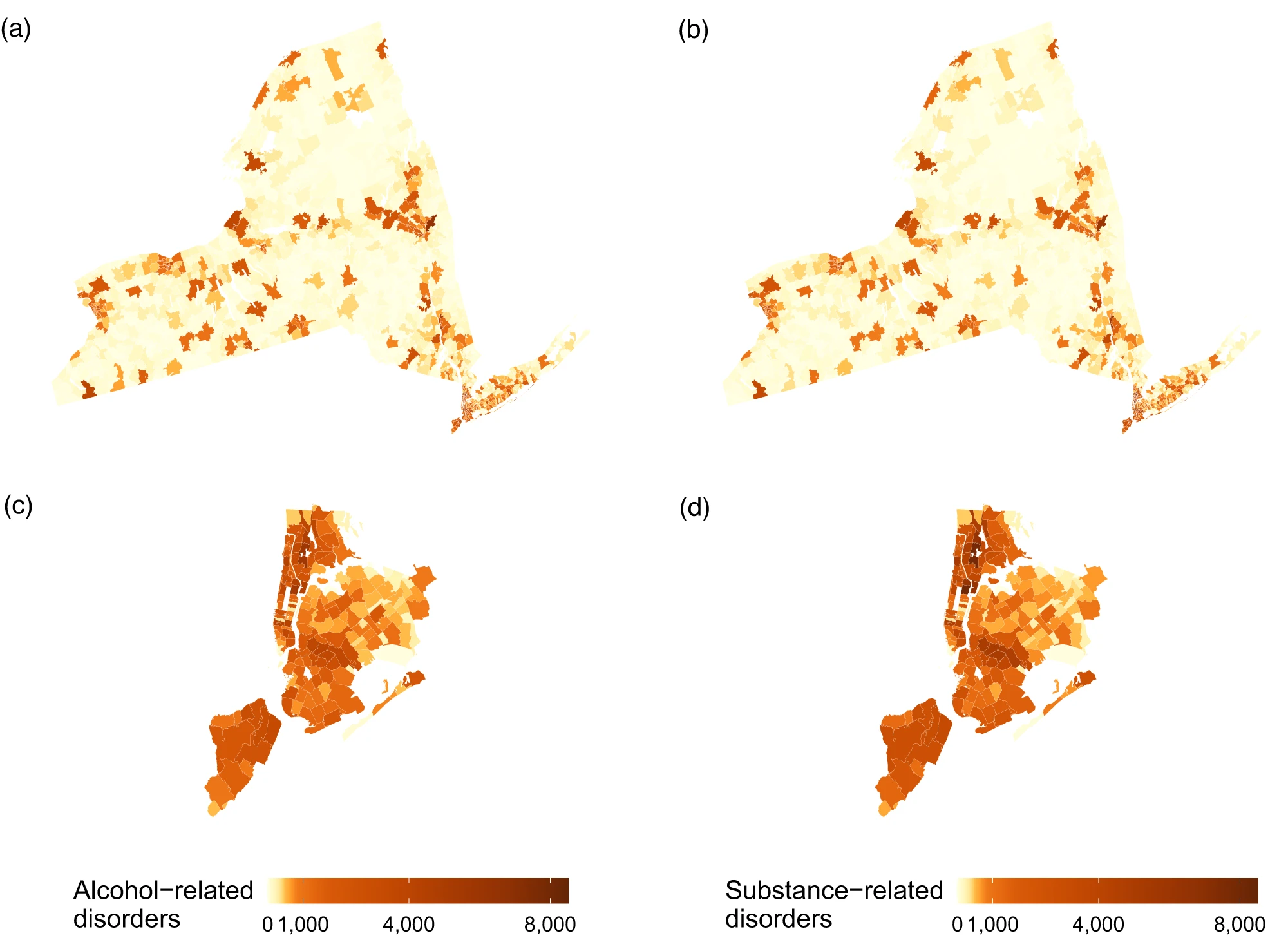
Hospital visits from alcohol- and substance-related disorders are driven by elevated temperatures and could be further affected by rising temperatures due to climate change, according to new research by environmental health scientists at Columbia University Mailman School of Public Health.
The study, which is published in the peer-reviewed journal Communications Medicine, is likely the first comprehensive investigation of the association between temperature and alcohol- and substance-related hospital visits.
“We saw that during periods of higher temperatures, there was a corresponding increase in hospital visits related to alcohol and substance use, which also brings attention to some less obvious potential consequences of climate change,” says first author Robbie M. Parks, PhD, assistant professor of environmental health sciences at Columbia Public Health.
In recent decades, there has been an increasing trend of heavy episodic drinking and alcohol-related deaths and disease in the United States, particularly in middle-aged to older adults. Drug overdose deaths have increased more than five times since the end of the 20th century.
The researchers examined the relationship between temperature and hospital visits related to alcohol and other drugs, including cannabis, cocaine, opioids, and sedatives in New York State. They used data from 671,625 alcohol- and 721,469 substance-related disorder hospital visits over 20 years and a comprehensive record of daily temperatures and relative humidity to derive insights using a statistical model which compared days with high temperatures with nearby days with lower temperatures useful to understand the impact of short-term climate-related phenomena such as periods of elevated heat.
They found that the higher the temperatures, the more hospital visits for alcohol-related disorders. Higher hospital visits in higher temperatures for alcohol-related disorders may potentially be driven by more time outdoors performing riskier activities, consuming more substances in more pleasant outdoor weather, more perspiration causing greater dehydration, or driving while under the influence.

For other drug disorders (cannabis, cocaine, opioid, sedatives), higher temperatures also resulted in more hospital visits but only up to a limit of 65.8°F (18.8°C). This temperature limit could happen because above a certain temperature people are no more likely to go outside.
Future research might examine the role of existing health conditions exacerbated by alcohol and/or substance use combined with rising temperatures.
The authors note that their study may underestimate the link between temperature rise and substance use disorders because the most severe disorders may have resulted in deaths before a hospital visit was possible. Going forward, the researchers may attempt to link cases of deaths with hospital visit records to create a fuller picture of patients’ medical history.
Meanwhile, public health scientists and officials can pursue interventions, such as awareness campaigns around the risks of warming temperatures on substance use. The findings could inform policy on proactive assistance of alcohol- and substance-vulnerable communities during periods of elevated temperatures.
“Public health interventions that broadly target alcohol and substance disorders in warmer weather—for example, targeted messaging on the risks of their consumption during warmer weather—should be a public health priority,” says senior author Marianthi-Anna Kioumourtzoglou, ScD, associate professor of environmental health sciences at Columbia Public Health.


Leave a Reply